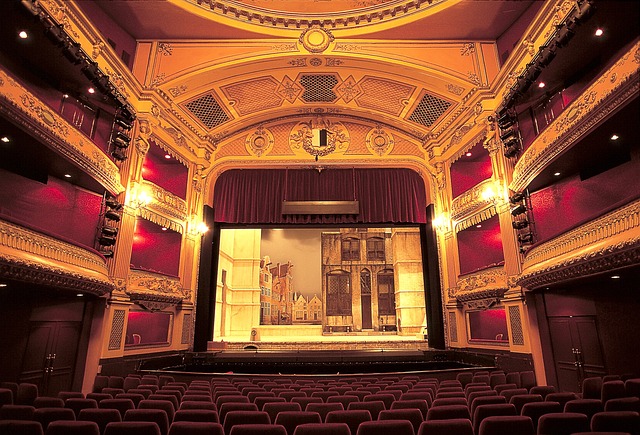
In a cyclorama, images can be projected that make the scene more complex and emphasize its depth.
The notion of cyclorama is formed from two Greek words: kýklos (which can be translated as “circle” ) and hórama (translatable as “view” ). The term refers, according to the first meaning mentioned by the Royal Spanish Academy ( RAE ) in its dictionary, to a panoramic image that develops in a cylinder .
Panoramic contemplation
This panorama is a view that is created in a hollow cylindrical-shaped structure . In the central part of its interior there is an isolated platform intended for spectators, the upper part of which is covered so that the overhead light is not visible.
The notion of cyclorama was coined by the Irish artist Robert Barker (1739-1806). This painter, in 1792 , devised a panorama of this type in the Scottish city of Edinburgh to capture the landscape that could be seen from a hill.
The idea of cyclorama, in short, refers to the work that is carried out in a cylindrical structure so that it can be contemplated from the inside. Thus the viewer is surrounded by the images and enjoys a 360º view.
Buildings
By extension, the name cyclorama is used to name the buildings created with the aim of housing these artistic works . Sometimes, with the passage of time , the use of the construction changes.
One of the most famous cycloramas is the Panorama Mesdag , a work that the painter Hendrik Willem Mesdag completed in 1881 . It is an image 120 meters in diameter and 14 meters high that portrays Scheveningen , a district of The Hague .
semicircular curtain
In the field of theater , finally, a cyclorama is a semicircular curtain that is located at the back of the stage. The cyclorama allows the projection of visual effects and the creation of a greater sense of depth for the viewer.
Its color is usually neutral, usually blue or white. Images are projected onto this curtain, both from the front and from the back (depending on the technology of the projector used and the particular needs of each work). This can lead to the representation of endless complex scenes , which would not be easy to recreate with material pieces: the sky, whether moving or static, a forest or the interior of an immense castle are just three of the possibilities offered by this element.
To install the cyclorama curtain you can proceed in different ways. One possibility is the use of rails to be able to move it, that is, remove or place it as the exhibition requires; but it can also be set for permanent use, if the organizers know that their presence will be necessary in all works. It is worth mentioning that if, instead of projecting images on it, they are painted directly, it is called a painted curtain .

A photography studio with a white cyclorama
In photography
In the field of photography, the cyclorama offers benefits similar to those of theater, since it allows the background to be replaced with a static image or a video. This is done in post-production or in real time, and requires the use of a video editing program. It is often said that the background , which in this case is the color of the cyclorama, is "removed", to replace it with the desired one.
The color of the cyclorama depends on the production needs; Among the most common are green, white and even black. One of its most important features is that it does not fold at the base, but rather leaves a fluid curve , to make it easier to remove and also remove shadows from real subjects and objects, which generally must be reprocessed. by computer. The most used materials are cardboard and fabric.
